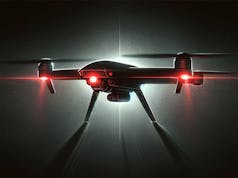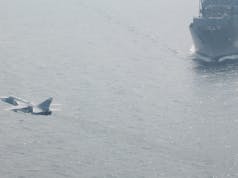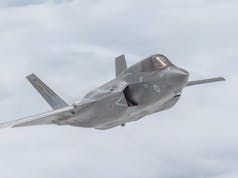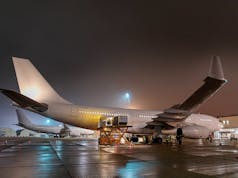n July 2017, The Times conducted an investigation into the F-35 programme, in a report the Defence Select Committee has criticised the MoD response.
This investigation resulted in a number of serious allegations being levelled at the most expensive international defence programme in history. The report ‘Unclear for Take-Off? F-35 Procurement: Summary’ has sought to weigh the claims made by The Times against expert commentary, technical reports and the evidence of Lockheed Martin and the Ministry of Defence.
The report sternly remarks:
“It is disappointing that neither invested in a serious media and public relations effort to refute the claims made by The Times, relying instead on a letter to the editor of the paper (in the case of Lockheed Martin) and a rather dismissive letter and briefing circulated by the Government to Conservative MPs.”
The Times’s investigation, say the committee, provided cause for concern and these ‘concerns were not alleviated by the disappointing nature of the initial responses from Lockheed Martin and the MoD’.
“During our inquiry, we received a number of assurances from the Government and Lockheed Martin that the issues with the programme that have been previously identified either have been, or are in the process of being, resolved. For the time being, we are willing to accept these assurances.
The F-35 is a major investment in defence capability for the UK and we want it to succeed and become the cornerstone of a new and effective strike capability for this country. However, it is precisely because this project is so important that it must be subjected to the closest possible scrutiny.”
The F-35 programme will supply combat aircraft to nine countries, with the principal customer being the United States of America. The UK is the second biggest client and, as the sole ‘Tier One’ partner in the programme, 15% of all F-35 production will take place in the UK.













We will buy 48 F35B which will cost£9.1bn by 2026.
5th generation combat will not be cheap, the software development and support costs are going to be truly mind blowing.
But the pay off comes in capability enhancement this type of aircraft provides.
Software development is so hard to judge in terms of cost and value for money because its intangible it always feels like it should be cheap. It should be very predictable to price though.
In my experience hardware is usually cheaper than the software, as you say it’s an intangible.
My guess is the £9.1bn cost includes a large slice for software.
Talk of a fly away cost of less than US$100m is meaningless.
The Times is a slightly posher version of the Sun when it comes to defence matters.
British media reporting on the military is awful.
These jets are already getting better engines, heads up displays and helmets, weapons and sensors and their ability to jam (better than a Growler by all accounts) and provide situational analysis and data is potentially a game changer. Software is never really cheap – but with a more mature code set I expect this plane to become incredible value for money.
The F35B will soon be around the $100m flyaway price that I believe will trigger a big UK order. Realistically there is no other game in town and we should be ordering 16 of these per year for the next 10 years and then 8 pa thereafter. This will not only give us a sizeable fleet, thereby correcting decisions to bring our combat aircraft force to a footprint size that is really too small for its commitments and risk profile, but will also leverage the UK’s position as a tier 1 partner.
This is more than we are currently committed to – but the UK needs this capability more than it probably realises I think.
Agree.
I have never understood why the UK does not apply your ideas concerning a “drumbeat” of orders.
Keeps people employed, creates a coherent plan, puts money into the economy, and gives economies of scale.
“It is disappointing that neither invested in a serious media and public relations effort”
I think they can just stop there, at least as far as the MOD is concerned. The MOD PR is non-existent, and it costs the UK in terms of retention and recruitment, but also in terms of budget, and quite possibly efficient use of the budget.
They really need to up their game.
This will come as quite a shock to most but WE ARE GETTING THE F35 FOR NOTHING.
In every other multi national aircraft project the %age work share is exactly mirrored by the %age of the total being built that we are buying.
Tornado 40% work share and 40% planes bought. Ditto Typhoon 33% work share and 33% planes bought.
F35 is the first plane in history that is different and boy is it different.
We have 16% of the work BUT ONLY BUYING 6% OF THE PLANES IN THE INITIAL BUILD PROGRAM which is a deal unheard of it’s so good.
This means that the government tax take on the 16% work share almost exactly equals the cost of our 6% of the planes we are buying !!!
If there was no project then there would be no work OR tax take.
Also with the huge export orders we still get 16% work share but don’t have to buy any more planes so that is pure profit for the UK in company business and salaries AND the tax take so JSF is a fantastically good deal for the UK and we should shut up about transparency because we are getting the planes FREE.
Also the sheer size of the program dwarfs any previous aircraft project.
The total project cost is $1 trillion which is one thousand billions and we have a 16% share in it which is $160 billions (about £120 billions) which is miles bigger than any other British aircraft project in history.